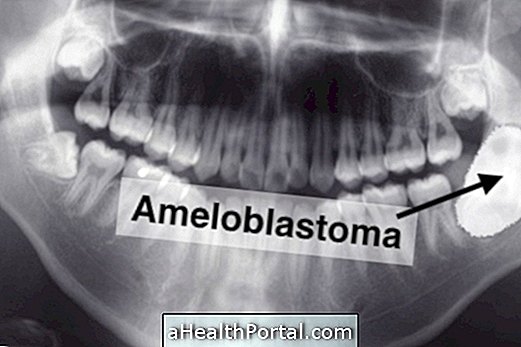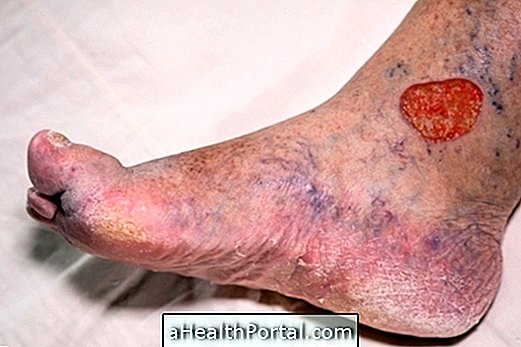Ameloblastoma is a rare tumor that grows in the bones of the mouth, especially in the jaw, provoking symptoms only when it is very big, like swelling of the face or difficulty to move the mouth. In other cases, it is common for it to be detected only during routine examinations at the dentist, such as X-ray or magnetic resonance imaging, for example.
Generally, ameloblastoma is benign and is more common in men between the ages of 30 and 50, however, it is also possible that a unicystic-type ameloblastoma appears even before the age of 30.
Although not life-threatening, ameloblastoma will gradually destroy the jaw bone, so treatment with surgery should be done as soon as possible after the diagnosis, to remove the tumor and prevent destruction of the bones of the mouth.

Main symptoms
In most cases, ameloblastoma does not cause any type of symptom, being discovered by chance during routine exams at the dentist. However, some people may experience symptoms such as:
- Swelling in the jaw, which does not hurt;
- Haemorrhage in the mouth;
- Displacement of some teeth;
- Difficulty in moving the mouth;
- Sensation of tingling in the face.
The swelling caused by ameloblastoma usually appears in the jaw, but it can also happen in the jaw. In some cases, the person may also have weak, steady pain in the molar region.
How is the diagnosis made?
Diagnosis of ameloblastoma is done by biopsy to evaluate tumor cells in the laboratory, however, the dentist may suspect ameloblastoma after x-ray or CT scans, by referring the patient to a specialist dentistry specialist.
Types of ameloblastoma
There are 3 main types of ameloblastoma:
- Unicystic ameloblastoma : characterized by being within a cyst and often is a mandibular tumor;
- Multicystic ameloblastoma : is the most common type of ameloblastoma, arising mainly in the molar region;
- Peripheral ameloblastoma : is the rarer type that affects only the soft tissues without affecting the bone.
There is also malignant ameloblastoma, which is uncommon but may arise even without being preceded by a benign ameloblastoma, and may present metastases.
How is the treatment done?
The treatment for ameloblastoma should be guided by a dentist and is usually done through surgery to remove the tumor, the part of the bone that has been affected and some of the healthy tissue, preventing the tumor from recurring.
In addition, the doctor may also recommend the use of radiotherapy to eliminate tumor cells that may have been in the mouth or to treat very small ameloblastomas that do not require surgery.
In more severe cases, where it is necessary to remove a lot of bone, the dentist can do a reconstruction of the jaw to maintain the aesthetics and functionality of the bones of the face, using pieces of bone taken from another part of the body.
























